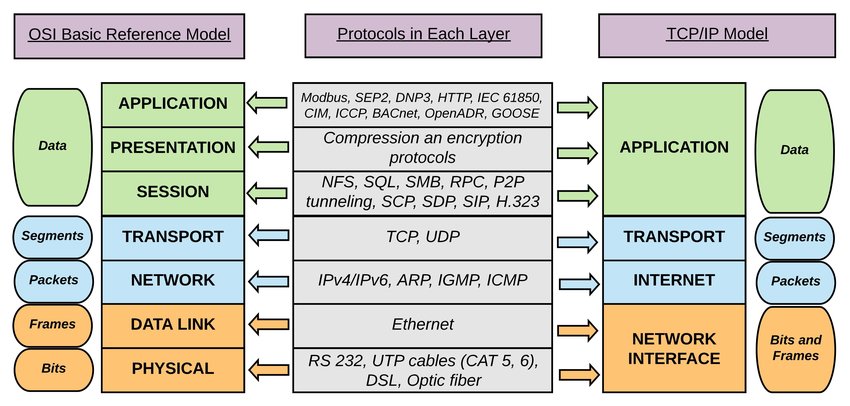Also called the DoD model
There are 2 versions of the TCP/IP Model:
- The 4 Layer one which is found in most of the IT related books (RF1122)
- The 5 Layer one which is newer and was made to align more with the OSI model. The Network Interface Layer is split into Data Link and Physical Layer (Not defined as an standard but considered valid)

Layer 1: Network Interface
Consist of the physical medium that interconnect computers
Responsible for defining a common way of interpreting signals from the physical layer
It is responsible for Hop to Hop Communication
Physical Layer Concepts
Data Link Layer Concepts
Layer 2: Internet Layer
Responsible for End to End Communication
Get data across a collection of network (across nodes)
IP : Internet Protocol
Layer 3: Transport Layer
Responsible for Server to Server Communication
TCP: Transmission Control Protocol (Reliable Data Transfer)
UDP: User Datagram Protocol (Unreliable Data Transfer)
RTP: Read Time Protocol (Video & Audio Transfer)
Layer 4: Application Layer
The actual data generated by the source application is available at this layer